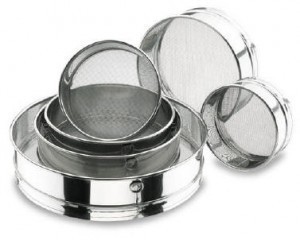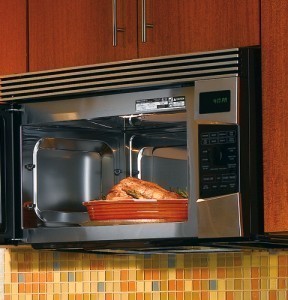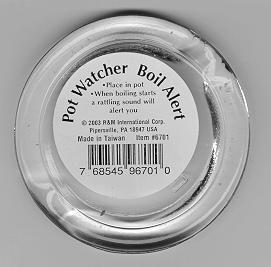Tamis Sizes
A tamis is a kitchen utility used for straining food.  It also functions as a food mill or grater. It is called a chalni in India. The tamis is also known as a drum sieve.
It also functions as a food mill or grater. It is called a chalni in India. The tamis is also known as a drum sieve.
Tamis Dimensions and Shape
The size of the tamis will depend on the manufacturer. There are some drum sieves that measure 12 x 12 x 3.2 inches and weigh 1.2 ounces. Other drum sieves measure 7 1/16" x 8 3/4" x 10", while others measure 8 x 8 x 15.8 inches. Many of the tamises available range in size from 14 to 41 centimeters or 6 to 16 inches.
While the sizes differ, they are often shaped like a snare drum. The tamis is fitted with a cylindrical edge. This edge is typically constructed from wood or steel. This edge is built to aid the nylon disc mesh. Sometimes the disc is made from metal or horsehair mesh.
Application
Even if the tamis dimensions differ, the way they are used is pretty much standardized. You have to put the tamis over a bowl. Now you just have to add the food that needs to be strained in the mesh’s center.
The food is subsequently pushed in by a scraper or pestle. Although their exact origin is unknown, versions of the tamis were already in existence during the Middle Ages.
The mesh of the drum sieve is flat. This means only little effort is required for downward pressure. The pressure can be applied easily by scraping in a horizontal manner.
The same cannot be said for the chinoise. With the chinoise, you have to push through its tip. Most people like to use the tamis with the hoop uppermost.
This is advantageous because it can contain more. At the same time, it lets the bowl settle on the hoop rather than the mesh. This can be done whatever the tamis dimensions are.
The tamis is preferred by many cooks because it can sift and grate much better than other similar tools. Another reason for its popularity is that the strained material’s texture is uniform.
Mesh Variants
As stated, the disc mesh can be made from various materials. The best option is nylon. It is stronger than wire and is more durable. Nylon is also better at maintaining its shape. The best type of nylon is medium-coarse for fruit purees.
The wire mesh should not be used with fruit purees because the wire is likely to cause discoloration. Another problem with wire mesh is it needs more maintenance. If it is not dried sufficiently, it will rust.
The wire mesh is much sharper than the nylon though. The horsehair is another variant. Although it used to be popular, it has become scarce now. In fact the only places you can find them in bulk are antique and specialty stores.
The tamis dimensions have to be evaluated thoroughly if you do a lot of straining. You must also pay attention to the mesh type. It will determine how smooth the texture will be.





